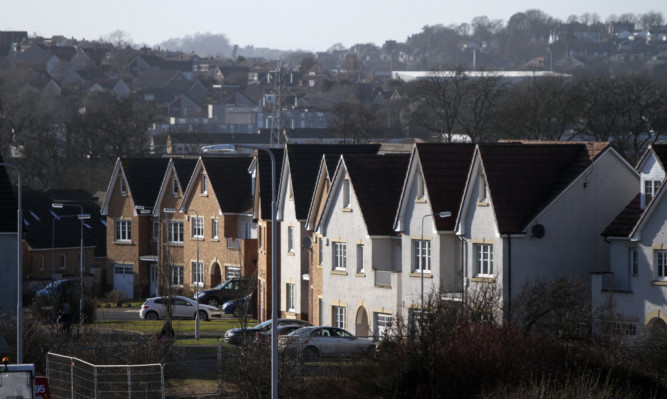House prices in Scotland rose 4.2% last year to reach almost pre-recession levels, according to a new report.
The price of a property rose £6,688 to reach £165,075 by December 2014, the highest level seen since June 2008, the Your Move/Acadata House Price Index showed.
There was also a growth in total home sales, which were 11% higher last year than in 2013, led by the first-time buyer market.
The Shetland Islands saw the biggest increase in prices after a rise of 17.1% on the previous month and 19.1% on the previous year.
Prices in Aberdeen were up 10% on the previous year, rising to an average £225,060, suggesting the city’s housing market has not been affected by plummeting oil prices, the report for December 2014 said.
The Granite City also recorded the highest price paid for a property in Scotland throughout the whole of 2014, a £3 million transaction in December.
Christine Campbell, regional managing director of Your Move, said: “Scottish house prices reached a crescendo at the end of 2014, ending on a high note with an all-time record December.
“After the brief unsteadying influence of the independence referendum, house price growth has firmly fallen back into a steady rhythm and values climbed 0.3% in December.
“The underlying melody in the market hasn’t been broken and property values have risen 4.2% or £6,688 in a year, taking them to the highest level seen since June 2008.
“Standing at £165,075 in December, this means the average house price in Scotland is now just £440 shy of the pre-recession peak and households across the country are beginning to taste the fruits of the economic revival.”
The Western Isles also saw a significant increase, with the average house price rising 8.3% on the previous year, while in North Ayrshire prices were up 8.2%.
There were about 8,500 transactions a month in the last five months of 2014, which is higher than the same five months in any of the six preceding years.
There was a 15% increase in the number of loans to first-time buyers during the third quarter of 2014, compared to a year earlier, following on from the two preceding quarters in 2014 in which loans to first-time buyers were 31% and 23% above the same period in 2013.
The report predicts that the new land and buildings transaction tax (LBTT), which will come into force on April 1, will have an impact on the market over the next few months.
On a property priced in the £125,000-£250,000 range, there will be a £200 saving under the new LBTT rates compared to the existing recently updated stamp duty land tax (SDLT), the report said.
However, on properties costing more than £254,000, which represented some 14% of the home sales market in 2014, tax rates will be considerably higher under the LBTT rules compared to the current SDLT rates.
John Tindale, senior housing analyst for Acadata, said: “We anticipate that there will be a steady increase in the number of purchases of properties in excess of £254,000 prior to April 1 2015 as buyers seek to avoid paying the additional tax.
“We also expect to see the average price of housing rise, somewhat artificially, over the next few months and especially in March 2015, when there will undoubtedly be a rush of higher-priced sales just prior to the tax change-over date.”
